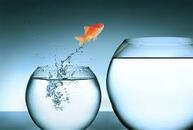Student Wellbeing
Transitions
In the coming weeks we will begin to focus on transitions for 2021. The impact of transitions depends greatly on the degree of change involved, however with anxiety already heightened due to COVID, it is important for teachers and parents to be informed and prepared to suport and guide our young people if required.
The following information from BeYou provides some great information about Transitions.
All transitions, but especially those to new learning environments are major events in children's lives as they change social connections that have been built.
What are transitions?
Transitions are defined quite simply as change. They are a period where we must adapt to new circumstances, expectations, people, environments or routines. Whether big or small, transitions are a significant part in children and young people’s lives, as well as the learning community. Children and young people may also experience transitions in their home life – for example, moving house, going on holiday, the birth of a sibling, family separations and bereavements.
Impact of transitions
Transition is not just about the first day – it’s a process that happens over time. It begins as families and educational settings start to prepare during the previous year, or even earlier. It continues as children and young people experience their first days, weeks and months in their new environment.
Transition from home and between education settings involves various key changes for children, young people and families, including:
• the physical environment (for example, the size of the outdoor areas, buildings, the location and types of toilets, the number of other children, young people and educators)
• rules and procedures (for example, more structured times for attending class, eating and going to the toilet, rules for different places and times such as the classroom and recess)
• relationships (for example, meeting new children, young people and adults, responding to students of different ages, leaving established relationships with educators, getting to know a range of educators for different subjects)
• learning (for example, more formal learning experiences, structured times and set tasks, increasing independence and responsibility).
Importance of transitions
Potential challenges and stresses
Research shows that transitions to a new learning environment is a time of potential challenge and stress for children, young people and their families. For some, it brings excitement about making friends and learning new things, while for others the change can leave them feeling nervous and overwhelmed. Some adjust quickly to their new school For more information visit beyou.edu.au environment; others can take many months to adapt. Studies show that around 15% of students have some difficulties adjusting as they transition in and out of primary school.
Understanding behaviour
It’s normal for children and young people to have strong feelings about an upcoming transition, such as excitement about the prospect of going to a new school, as well as nervousness about what lies ahead. Many children and young people may also feel sad or angry about leaving their current learning environment and the positive relationships they’ve established with educators and each other.
Common feelings children and young people have during transition can include:
• excitement
• sadness
• anger
• anticipation
• fear or anxiety.
Understanding and helping children and young people to handle the feelings will help to reduce their stress and can provide them with positive coping strategies. Children and young people often have difficulty explaining in words how they are feeling – instead they might show their feelings through their behaviour.
Behaviours you might observe include:
In children transitioning to primary school – clinging behaviour, restlessness, withdrawal, anxiousness, refusal to comply, avoidance, planning and organisation difficulties, crying and tantrums, regression to younger behaviours, volatility.
In transitioning to secondary school – withdrawal or difficulty participating in class discussions, low confidence or self-esteem, regression to younger behaviours, avoidance of tasks, short temper or behavioural concerns, friendship issues or isolation. Families might also notice issues such as changes in eating habits (low appetite or overeating), difficulties falling asleep, feeling unwell (for example, sore stomach or headaches) or difficulty separating from family members.
These could be typical behaviours
Many of these behaviours are typical for children as they adjust to their new environment, but educators and families need to show understanding and support to help them settle in. If concerning behaviours persist, it’s important to get help to identify possible underlying problems such as mental health issues or academic difficulties. You may need to seek advice from the school wellbeing team or external health and community professionals.
Paul Anderson
Student Wellbeing Leader
![]()


